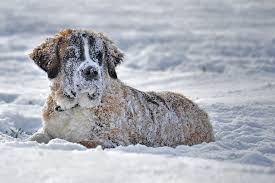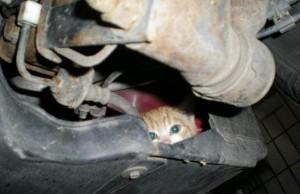Hypothermia, Frostbite, and Your Pet
How to Keep Your Pet Safe in the Winter
 Living in regions where the temperatures can get dangerously low, it is important to keep your pets safe against the cold. Despite having a “fur coat,” animals are still as sensitive with the cold as their human counterparts. If it is too cold for you, it is probably too cold for your pets.
Living in regions where the temperatures can get dangerously low, it is important to keep your pets safe against the cold. Despite having a “fur coat,” animals are still as sensitive with the cold as their human counterparts. If it is too cold for you, it is probably too cold for your pets.
Hypothermia is the term for an emergency condition when the core body temperature drops drastically low and the body loses heat faster than it can produce. At such a low body temperature, the heart, nervous system, and important organs can no longer function properly. If the body temperature remains at such a low number, it can eventually lead to complete failure of these organs and death.
First signs of hypothermia include paleness and shivering which may then be followed by listlessness and lethargy. If you suspect your pets are experiencing hypothermia, warm them up with blankets and give something warm to drink. Put warm water in a bottle and wrap in a towel or blanket to prevent burning your pet when placed against the animal. Use plastic ziploc bags to warm up uncooked rice in the microwave. Once again, wrap in a towel to keep from placing directly on skin. The normal body temperature of cats and dogs range from 100.0 oF to 102.5 oF.
Frostbite occurs when pets are exposed to extremely cold temperatures for extended periods of time. It is the body’s way of coping with the cold. As a survival technique, the body begins to be selective as to where it wants to send warm blood. The core organs (heart, lungs, liver, kidneys) are more important for survival then peripheral extremities such as ear tips, tail, and paws. Due to constriction of blood flow to these extremities, they become frozen leading to death of the tissue in these areas. It is very likely that once the tissue dies, the ear tips, tail, toes, and/or limbs may need to be amputated or will fall off on their own.
Signs of frostbite would include such things as actual ice forming on limbs/extremities, shivering, and/or redness of tissue followed by paleness. If frostbite has occurred, best thing to do is to wrap your pet in a warm blanket. This helps to warm up the extremities, warm up entire body and bring temperature back up, but also to prevent self trauma due to fact that once tissues begin to warm up again, there may be some discomfort. Do not rub or massage the frozen tissue and do not completely immerse in water. Also, seek immediate veterinary assistance-an animal that has been hypothermic or has frostbite is in danger for their life.
Here are a few ways to keep them protected against severe weather and cold temperatures:
- As a general rule of thumb, outdoor pets should be brought inside if the temperature drops below 20 degrees Fahrenheit, depending on the breed and hair coat some animals can withstand colder temperatures for longer periods of time.
- Animals with short hair or small animals (puppies, kittens, small breeds, etc) should be brought inside if the temperature drops below 40 degrees Fahrenheit.
- When they do go outside, consider putting a jacket, sweater with high collar, and/or booties on them to keep them warmer while going potty.
- Keep dogs on a leash while outside to prevent them from exploring longer than necessary.
- Limit exposure time- have your pet go outside long enough to give them time to relieve themselves, then bring them back inside.
- Proper grooming is essential to help animals maintain a layer of warming air within their coat. Pets who are heavily matted cannot keep themselves as warm.
- NEVER leave them alone in vehicles, even if it is running. Carbon monoxide has the potential to build up while vehicle is idling.
- If the animal must be outside, provide adequate shelter. A house or shelter that is just big enough for your pet will warm up faster and retain heat better than a larger one.
- Use heated water bowls to prevent water from freezing. Also, replenish bowl frequently. A dehydrated animal is more prone to health issues.
- Cats should be kept inside. If a cat is outdoors, it will seek warmth under the hood
 of a car. If you suspect a cat has had access to your garage or you park your vehicle outside, pound on the hood prior to starting your car.
of a car. If you suspect a cat has had access to your garage or you park your vehicle outside, pound on the hood prior to starting your car. - Always wipe the paws of your pets if exposed to areas with ice melts. It can cause blistering on paws and may contain chemicals that are dangerous if consumed.
- Antifreeze is a deadly poison to your pets. Make sure your pets do not have easy access to it in the garage or shed. It has a sweet taste, so will readily lick it up if there is any spilled. Clean up immediately if any antifreeze has been spilled. Dilute the area well with water and sweep excess water into a rocky or sandy area. Cover area with soil to keep pets from licking at the rocks. If your pet has consumed any antifreeze at all, immediately contact your veterinarian.
 of a car. If you suspect a cat has had access to your garage or you park your vehicle outside, pound on the hood prior to starting your car.
of a car. If you suspect a cat has had access to your garage or you park your vehicle outside, pound on the hood prior to starting your car.